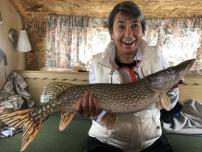The announcement of two new races, the Wonder Woman Run and the Scooby Doo Run, leaves organizers with a question: Where have all the traditional runners gone?
It seems the ‘old guard,’ – the weekend warrior who threw on any old T-shirt and shorts and headed out for a 5K – are increasingly being replaced by runners in tutus, high heels or prom dresses. In addition, races are no longer just community runs – like kids’ birthday parties, they have themes. Super heroes, cartoon characters, ugly bridesmaid dresses and more.
And across the nation, they are raking in the runners.
Back in 2015, Rick Harshberger of Running USA gave an interview to Arizona PBS, in which he noted that the demographic of running is changing.
“Not only do you see the boom of women, you also see a different type of experience offered,” Harshbarger said. “Women, in particular, are running with their girlfriends, their sisters. You start to see people take selfies and posting online.”
To maximize the number of likes on those selfies, it helps to be in costume. It might not be optimal for attaining a personal record time, but the goals of these new runners are closer to personal bonding.
So the running event industry has responded. Disney, in particular, took up the flag with a multitude of costumed runs. They include everything from princess themes to Star Wars costumes.
Sort of like cosplay but in running shoes. And the after-party is a huge event.
“You begin to see a shift toward a social atmosphere, where there’s music and festival and things to do, both for runners after the event and participants during the event,” Harshbarger said. “It took the intimidation factor way down.”
Indeed, even non-runners are lured out onto 5K courses by events like the Color Run, Running with the Bulls (in which shopping carts are decorated as the toros, and pushed by volunteers) and Bridesmaid 5K (hey, brides are always positive someone can wear it again).
And once bitten by the bugs, runners can continue to take on bigger challenges. Marathon organizers are banking on a new generation of runners picking up a passion for the sport through their own themed races, such as the Rock ‘N’ Roll Marathon Series, which started in 1998 in San Diego and has since expanded to 30 cities across the globe, including one of its largest races in Phoenix.
According to Running USA, the percentage of full marathon runners who are women increased from 10 in 1980 to 43 in 2014. During the same period, the average age for marathoners increased six years for men and five for women.
And since the industry evolves to meet the needs of the athletes. Some companies offer their services to event owners (or more realistically, to those who have an idea for an event, but no idea what to do after that), while others offer suggestions in addition to hosting registration, posting results and more.
Occasionally, the rush to cash in on a trend can lead to unsustainable growth. An article in SDM about obstacle racing noted,
When the obstacle racing industry first started exploding in popularity, everyone wanted to jump on the bandwagon, which led to (a) a lot of people setting up races but knowing nothing about event planning, logistics or anything else, and (b) trying to expand too quickly and then going out of business before they could put on even a fraction of the events they had planned. That turned a lot of people off. You’ll always have bad actors who have this idea they can put on an event and make a lot of money, but now that the dust has settled in the industry, and now that there is a dedicated community of obstacle race athletes who communicate on social media, they’re finding that people are far more well-informed and they can’t get away with that kind of behavior.
Theme races, too, have come and gone, with even some longstanding races (including some of those put on by entertainment juggernaut Disney) having thrown in the towel. In some cases, the logistics were simply too difficult, while in others, the market became oversaturated, leading to a correction in the course of the running economy.
Theme runs, however, continue to be popular, and they have made the pages of everything from respected media outlets to various blogs. And then, of course, there was this gem from Runner’s World, listing fictitious failed theme runs. Our personal favorite:The 5-K Run. The concept: Athletes pin bib numbers on their shirts, warm up, amass at the starting line, and wait for the gun. When it goes off, they race really hard for 3.1 miles. Then they finish and go home.
Why it failed: Just too wacky.

